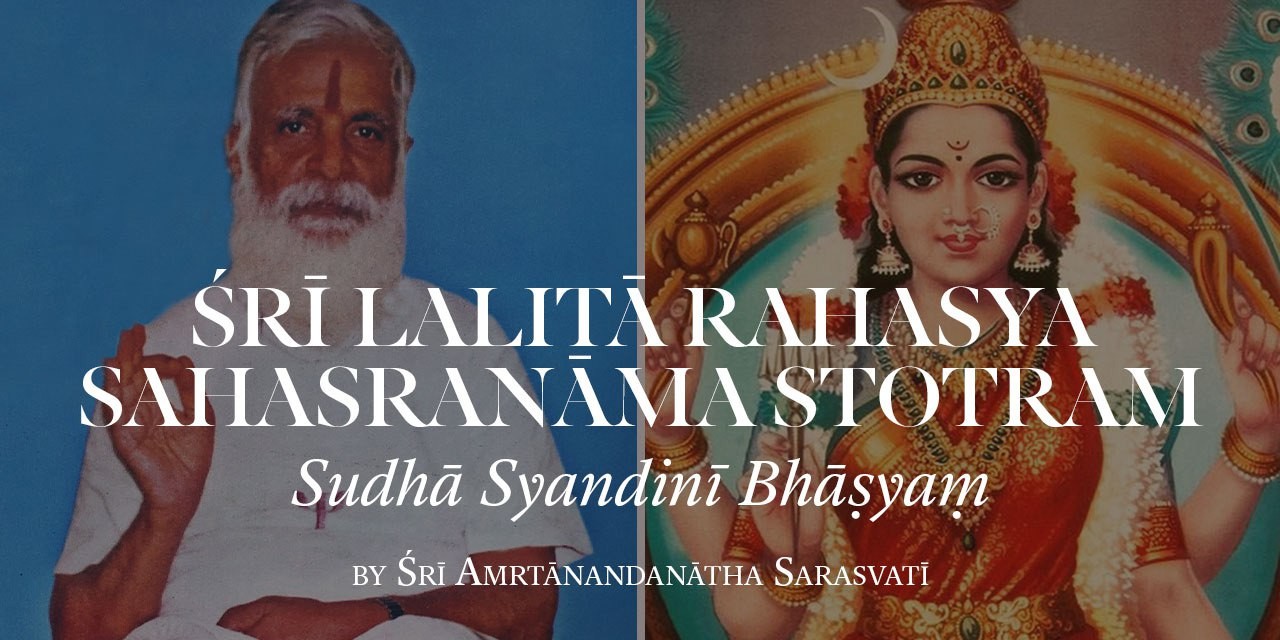- Edited

7) Caturbāhusamanvitā
Out of the strange glow, four hands stick out as the first discernible feature. There are not two hands as is to be expected for an ordinary female, but four, indicating a transcendental being to be interpreted with care. The number of hands seems to be a variable feature of Indian gods and goddesses. Four, six, eight, eighteen, all even numbers seem to be permitted. Here, four has a deep meaning, referring to the three dimensions of space and one of time in which the divine awareness chooses to express itself. Space is Viṣṇu; and Time is Kalā or Śiva. Space has three dimensions and time has one dimension which has the additional property of flow. The flow of space-time is seen as four rays, the four hands of Lalitā. How consciousness manifests in space-time as four weapons in the four hands follow.
Source: Śrī Amṛtānandanātha Saraswatī "Sudhā Syandinī Bhāṣyaṃ" Typed Manuscript
(an incomplete commentary on Lalitā Sahasranāma)

